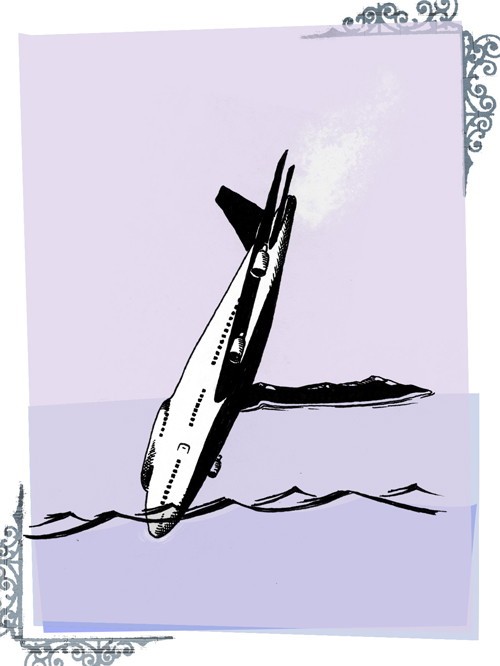Culture imitates art, and art, culture
What our cinematic fantasies say about our cultural state of mind
Stop me if you’ve heard this plot before:
Joe has a perfect life.
He has a car, a house, a wife and a child.
Suddenly, without warning, Joe’s life is all but destroyed by a different man (or men), who are, among many things, utter heartless bastards.
These men, lacking the moral fortitude, the upper-middle-class status, or the social grace that Joe likely has in spades, act out their anti-social fantasies on Joe’s life, raping his wife, killing his child, and probably – just to add insult to injury – burn his house down and steal his car.
These men are arrested and brought to trial, and wouldn’t you know it, they get off scot free.
Joe, being leagues ahead of these despicable scum suckers, both morally and socially, forgives the men, proceeds to take them under his wing and teaches them how to stop being such shitheads. He turns them into helpful, productive, moral members of civilized society, preventing such anti-social behavior from continuing, while learning his own lesson about the nature of forgiveness, love and compassion for his fellow man.
OK, that last part never happened.
No, actually what happens is that Joe flips his lid and proceeds to act out his own perverse anti-social fantasies, hunting down those low-lifes so that they all might know his pain before the end credits roll.
His revenge is taken not just on the criminals themselves, but also on the judge that set them free, the defense lawyer, and for good measure, the 12-person jury who participated in this corrupt system.
After all, everyone loves a happy ending.
Nothing new
This story isn’t something new. It’s been around in variations since the dawn of time. So why bother retelling it?
As a storytelling medium, film has always survived on its reflections of the public consciousness, taking our popular anxieties, frustrations and fantasies, and reflecting them back to us on celluloid.
What does this cultural mirror say about our psyche?
Many popular films today seem to recall films of the early ‘70s, a time when the public was faced with many similar social problems as today: from the recession, to the failure of the Vietnam War, to gas prices, to its growing xenophobic outlook.
Films like Dirty Harry,Death Wish and Straw Dogs are eerily similar to The Dark Knight, Law Abiding Citizen and Taken, three big hits from the past year-and-a-half.
“There’s many ways that people vent their anxieties and frustrations. Films like The Dark Knight are targeted at people who might find it soothing to see someone become more or less involved in the community, whether you agree with vigilante justice or not. I guess for those people, seeing this concept of a private citizen, an individual, do something that actually changes their community is something that’s really soothing,” said Barry Leid, a Winnipeg cinephile.
“Maybe it’s a little cynical to say, but perhaps people feel that even the idea of being able to change something yourself is fantasy. So to see it actually happen and to see those changes come from an individual is a kind of escapism.”
These vigilante fantasies most often feature gratuitous violence, largely at the hands of the film’s hero.
Clearly there is a part of the public which identifies with these unsympathetic characters in some way or another, which is frightening considering the similarities between these films and another immensely popular genre.
Marked by the incredible popularity of the Saw films, among other titles, a whole new genre has been born in recent years; one which many critics have labelled ‘torture-porn.’
These films also feature gratuitous violence and innocence taken advantage of, but the twist is that it’s not motivated out of revenge at all.
The draw
So what is it that draws people to these films?
“You could look back at the films of Luis Buñuel, like [1929’s] Un chien andalou, he did that just to provoke people. You could certainly classify that film as torture-porn in a sense, but he himself wasn’t trying to fetishize violence, he was trying to really make people angry and that was a point in and of itself,” said Leid.
He theorizes that torture-porn is perhaps about expressing frustrations over having to deal with people who are different than yourself, and that comes out in a very violent way in those films.
“In Hostel, for example you’ve got people preying on tourists, particularly Americans, so there’s something to be said for that too. Who knows if it is something that was in their psyche before, or if it’s just aggression that has always been there, and vents through these hyper-graphic horror films?”
“I guess it’s going to be something that people will have to be aware [of] and struggle with,” he adds. “If they feel uncomfortable with it, they’ll have to really explore why, and not just readily accept [it] because of pressure, or [feel] that their culture has to move that way.”
In the end, it seems that our general acceptance of these violent fantasies is a result of our over-exposed culture’s reluctance to question these decisions, instead opting simply to accept what it sees onscreen.
“People need to ask themselves, ‘Why?’” he concludes. “Perhaps they feel uncomfortable with themselves. ‘Yes, I am watching it, but I don’t really want to ask myself why that is.’ There’s kind of a knee-jerk reaction in that. ‘Oh, you don’t understand, you’re just being sensitive.’”
Published in Volume 64, Number 12 of The Uniter (November 19, 2009)







